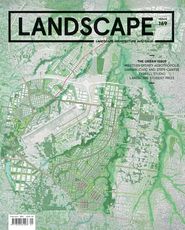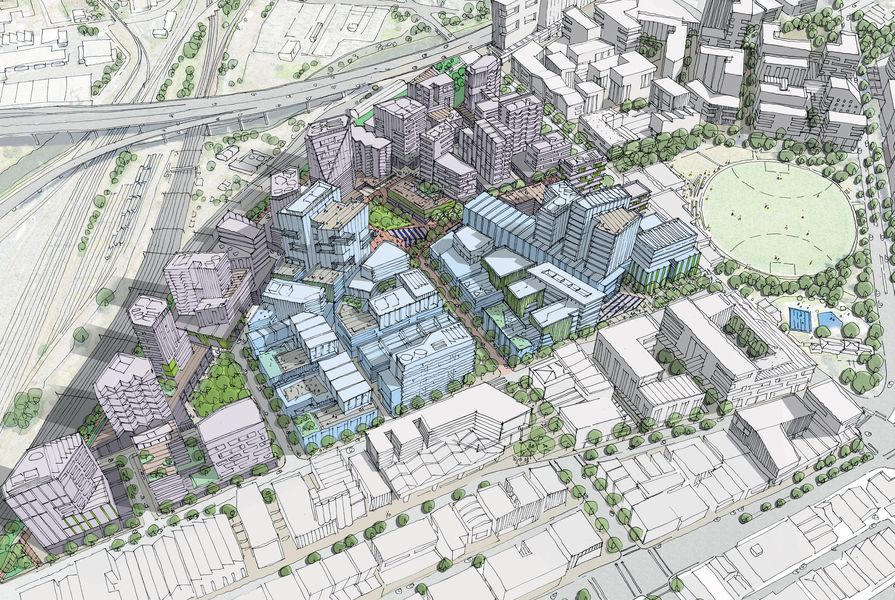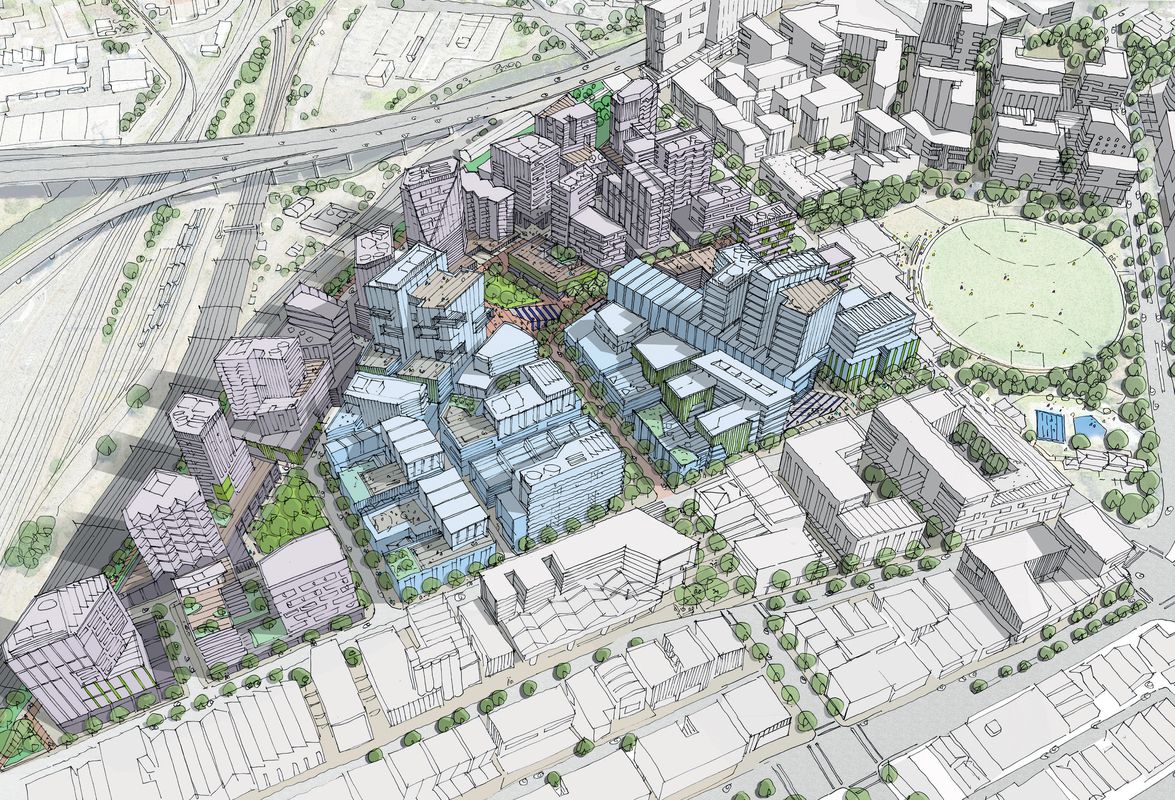Emma Appleton, Director, City Strategy at City of Melbourne.
Emma Washington: What’s your role?
Emma Appleton: I’m director of City Strategy at City of Melbourne. Our branch specializes in strategy development, including transport, heritage and affordable housing, urban design and planning policy, [and] spatial planning, including structure plans and urban renewal precinct delivery. We also translate strategic plans into the planning scheme, implementing built form and land-use controls to provide clarity and certainty about future change in neighbourhoods and precincts. We work collaboratively across council to ensure that policy and strategy draw from the organization’s operational knowledge and can also be implemented.
EW: How has your career developed?
EA: I trained initially in architecture, went into a landscape architecture postgraduate degree, then worked at Maroochy Shire Council as a landscape assessment officer assessing development applications, developing landscape guidance and implementing public realm projects. I then relocated to Glasgow, worked on major city strategies at Gillespies for around 3.5 years, which led to a master’s in urban design at Oxford Brookes University. Following that, I moved to London to become an advisor at the Commission for Architecture and the Built Environment (CABE) and to lead the enabling program, with particular focus on masterplanning and design of major housing initiatives – urban renewal in the northern cities and housing growth in the south-east of England. In 2009, I came back to Australia and led the urban design team at VicUrban on various regeneration projects, including the Docklands, Dandenong and Maribyrnong, then moved to the Office of the Victorian Government Architect to set up and lead the Victorian Design Review Panel. The City Strategy director role at the City of Melbourne draws from all my previous roles.
EW: What do you see as the appeal of these roles for landscape architects?
EA: The opportunity to work in multidisciplinary teams and understand how the skills of different professions can come together and add value to projects. Landscape architecture is a very broad discipline by training, and you can apply that thinking and approach to much broader city systems. My role at CABE was where I think I went from being a true landscape architect to being much more of a city thinker and city strategist. From a leadership perspective, these city roles are an extraordinary opportunity to make better places and policy decisions that might impact on the city for 10 to 20 years.
EW: Why are landscape architects well suited to strategic city-shaping positions and what particular skills do they bring to the table?
EA: Landscape architects bring a system-based, strategic and creative approach to problem-solving. As one component within a much broader system – be it the environmental or development system – they collaborate to achieve what their expertise brings. Their research skills and the strong need to be evidence-based in their approach all translate well to city councils and public agencies because you need that evidence base to be influential in those roles and convince others to do things differently or to set new and innovative policy. They’re also good at narrative and telling a story of connection between things at different spatial scales through words and illustration – a powerful way to test and shape ideas.
EW: Have you seen a shift in your department in terms of hiring landscape architects recently?
EA: We employ a lot of landscape architects across our City Strategy and City Design branches. City Design has an in-house function relative to design and, under the leadership of Rob Adams, has always had a very strong landscape [architecture] base. There are lot of landscape architects in leadership positions across the organization. We’ve had general managers for strategy planning climate change and a general manager of city communities who were landscape architects. In the City Strategy branch, we employ a lot of strategic planners who then go on to take degrees in urban design.
EW: What are some of the major projects currently in the works?
EA: Above and beyond any other municipality in Victoria, the central city has experienced the biggest issues as a result of COVID-19. Under last year’s lockdown restrictions, all the things we love about our city weren’t happening. When the pandemic began, we started working on a city- recovery strategy that led to our COVID-19 Reactivation and Recovery Plan, which was endorsed by council last September.
The city also declared a climate and biodiversity crisis in February last year and our commitment to respond was endorsed by council in February 2020. The bushfires in Victoria brought into clear focus the need to act.
Another issue is flooding. We have three urban renewal precincts extremely close to the city centre that have been declared state significant projects – Arden, Macaulay and Fishermans Bend. These areas hadn’t been developed earlier in the city’s evolution because they’re low-lying and next to waterways. With the flood-management issues we’re increasingly facing, it’s important not just to hide water away underground or manage it with engineering solutions, but [to imagine] how our future public places within the city can embrace and live with water in a different way, like many other cities do.
For a long time, there has been significant underinvestment in social housing by state and federal governments, as well as in affordable housing for key workers. In terms of affordable homes, we’re 5,500 homes short at the moment within the City of Melbourne, which will grow to 23,500 by 2036 if there isn’t intervention. The Victorian Government has recently launched “Victoria’s Big Housing Build,” which invests $5.2 billion into a program to deliver 12,000 affordable homes over four years. City of Melbourne has launched its Affordable Housing Strategy 2030, which was endorsed by the Future Melbourne Committee in December 2020.
Another issue is around Aboriginal culture and reconciliation. How can we make our city an Aboriginal city and ensure that within the public realm, at a strategic level but also visibly, we really learn and work alongside the Traditional Custodians to elevate culture and understanding, and adopt sustainable land management practice? City of Melbourne has a dedicated Aboriginal Melbourne branch within the council that is doing extraordinary work to build the organization’s commitment and capability.
EW: Are there any other major projects in the works that you’d like to highlight?
EA: We’re focusing on the delivery of the transport strategy at the moment – in particular, the very rapid delivery of segregated bike lanes within a 10-kilometre zone of central Melbourne. We hope people living within this area will choose to ride into the city, freeing up more space on public transport for those further out. Outdoor dining is another area – the planning laws have changed for a year to allow people to expand their outdoor dining potential within the city in the new COVID context. And we’ve also launched a creative laneways project – over six months, 150 artists will culturally reinvigorate the city’s laneways, employing a sector that’s been really hard hit.
EW: What do you see as the future for landscape architects working in these kinds of strategic government roles in Australia?
EA: The future looks bright. I think [all] landscape architects should consider working in government as part of their career. There are diverse opportunities in councils to really influence outcomes which affect the community and make the city accessible and inclusive for everyone. Councils offer opportunities to learn broad generalist skill sets, as well as how strategy operations and delivery intersect. Every day is different and the challenges are complex, and the impact can be very significant.
To read Emma Washington’s interview with Malcolm Snow, go here; and to read her interview with Fiona Morrison, visit here.
Source

Practice
Published online: 25 Mar 2021
Words:
Emma Washington
Images:
courtesy Victorian Planning Authority.
Issue
Landscape Architecture Australia, February 2021














